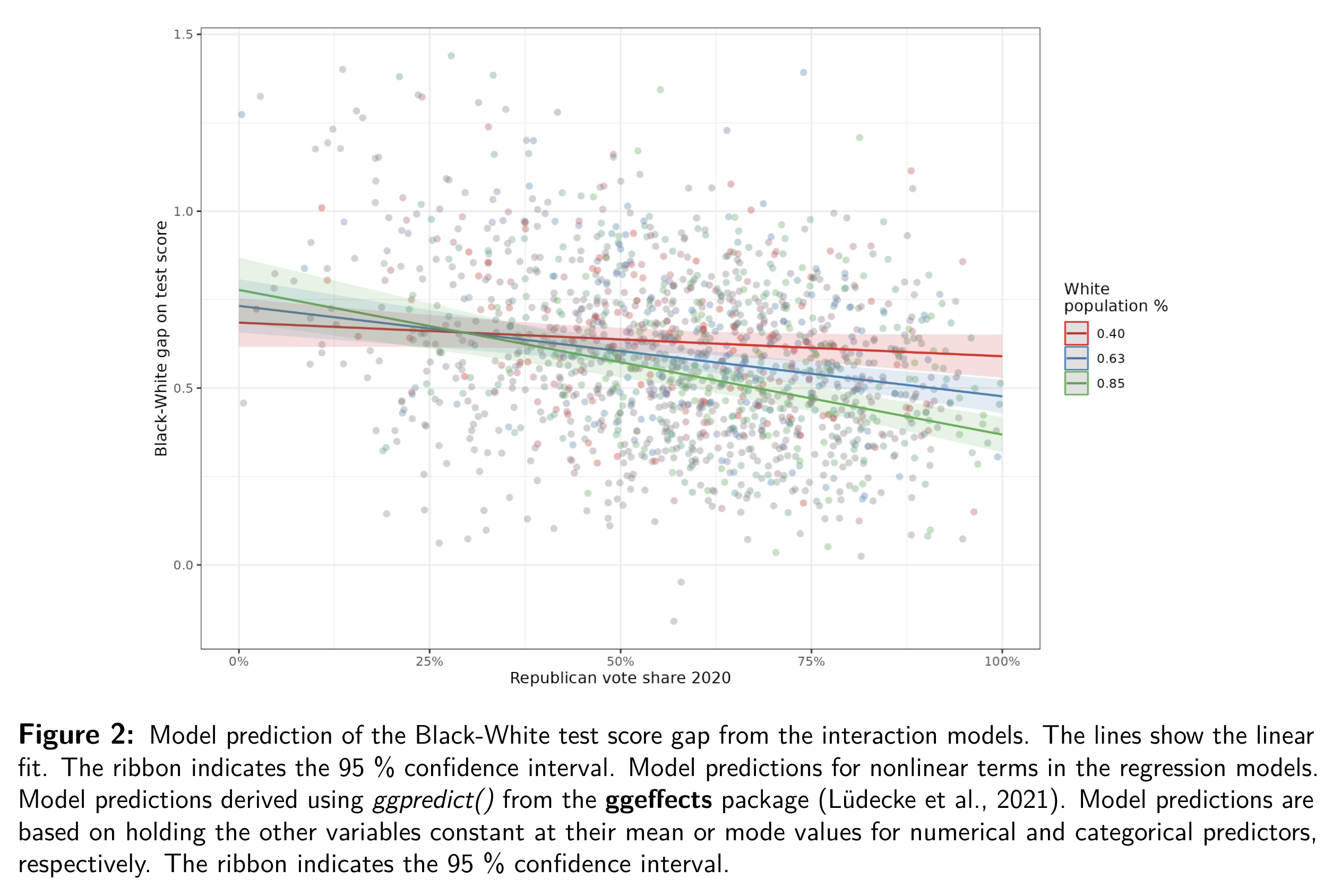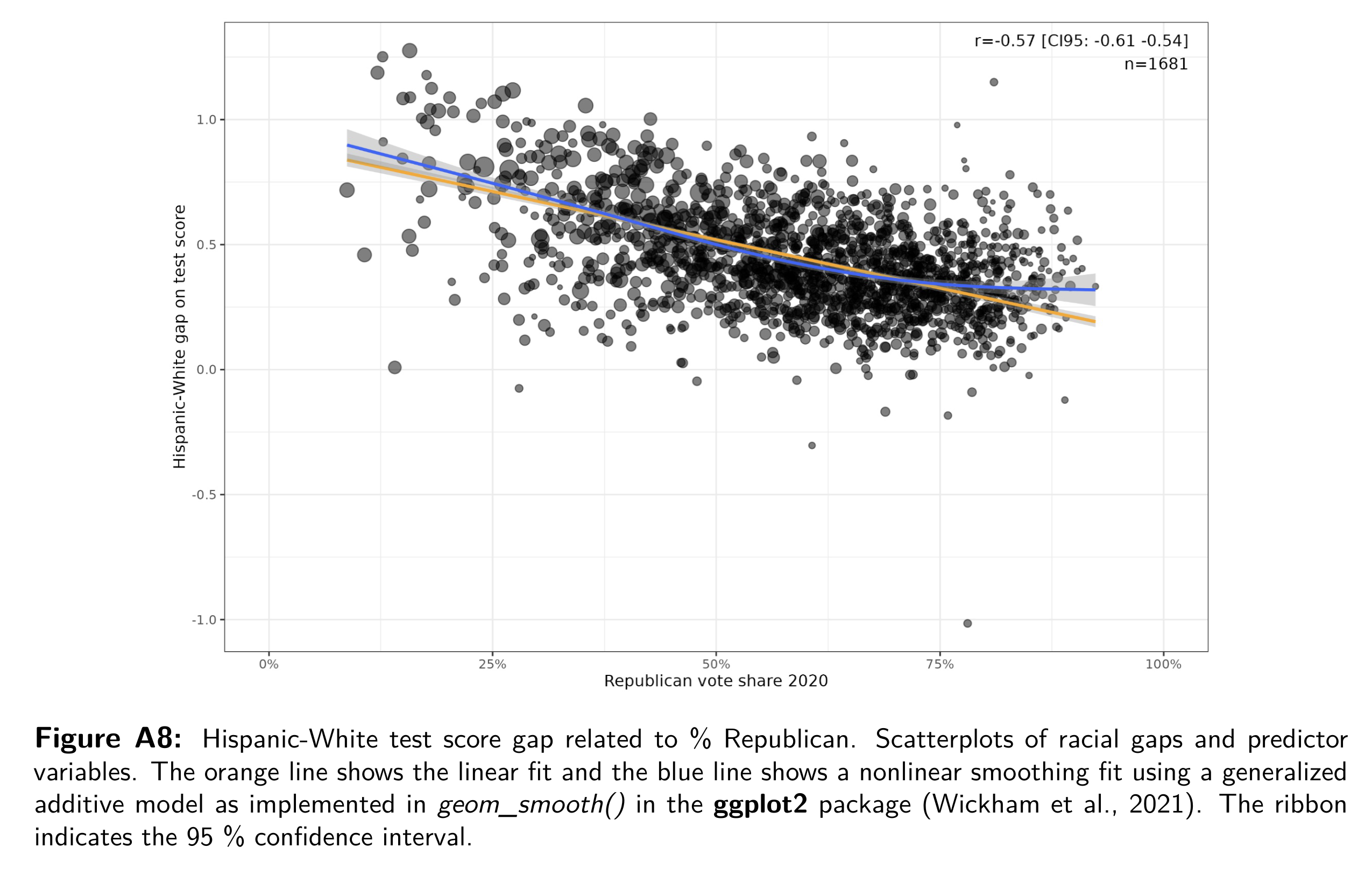The new issue of Mankind Quarterly just came out. It appears I have no less than 6 pieces in this, so let’s get started.
- Kirkegaard, E. O. W. (2023). Systemic Racism Does Not Explain Variation in Race Gaps on Cognitive Tests. Mankind Quarterly, 64, 2.
Systemic racism theory predicts that counties where there are more White people and where people are more racist against non-Whites should have larger race gaps on cognitive measures. We used county-level data from the United States to test these predictions of the systemic racism model. We used cognitive test results from state scholastic tests from the Stanford Education Data Archive (SEDA) 4.1, which provided data for Black-White and Hispanic-White gaps from 1,473 and 1,750 counties, respectively. Contrary to predictions from the systemic racism model, we find that cognitive race gaps are smaller in counties with more Republicans: r’s with %Republican are -.54 and -.59 for Black-White and Hispanic-White gaps, respectively. Gaps also tend to be smaller where there are more White people, with correlations of %White with Black-White and Hispanic-White gaps of r = -.30 and -.38 (all results p < .001). We furthermore used data from Project Implicit as a measure of latent racism against Blacks. However, these also tended to have the wrong direction of results: Higher implicit anti-Black racism was associated with smaller cognitive gaps. Regression modeling reduced the effect sizes, but not the general pattern of directions. The same pattern was also seen for social status gaps as the outcome variable. Results were entirely contrary to the predictions of the systemic racism model.
Keywords: Systemic racism, Institutional racism, Intelligence, Cognitive ability, Scholastic tests, Stanford Education Data Archive, Implicit Association Test, Republicans, Democrats, Black-White gap, Hispanic-White gap
This one had been in the works for a while. As Nathan Cofnas recently wrote about in detail, systemic racism theory is the default explanation in the egalitarian (woke) world view to explain group differences. The theory is merely an application of Marxist reasoning to society. Gaps in social status, and any other valuable outcome, are attributed to the powers that be abusing their positions. There’s no real meritocracy. When Blacks or women fare poorly on some metric compared with Whites or men, this is because Whites or men are holding Blacks or women back by discrimination in various forms.
This theory is eminently testable by looking at American data across the country. We can immediately derive some predictions:
- US counties with more Republican voters should have larger racial gaps, as the Republican share is believed to be indicative of anti-Black sentiments in the population, and these are considered to be causing lower Black performance via stereotype threat, micro-aggressions, and various other kinds of overt and covert discrimination. For the same reason, there should be a negative association between the Black average test score and the Republican voting share.
- Specifically, counties with higher anti-Black racism scores on the Implicit Association Test should have larger racial gaps.
- Counties with a larger White % of the population should have larger Black-White gaps, as Whites are the ones responsible for the oppression of non-Whites. When they are more numerically powerful, they are better able to implement their policies that favor Whites over other groups, especially Blacks.
And then it’s a simply matter of checking whether they hold true or not. Let’s consider the test score gap (scholastic tests for children) and the allegedly White supremacist power in a given county:

Here we used the Republican vote share — the White Supremacy party according to this model — and the Black-White achievement gap. Clearly, things are not looking the way the theory predicts. In fact, the larger the Republican vote share in a county, the smaller is the Black-White achievement gap. The same holds true if we use the White population share instead:

Thus, we see that the primary race gap of concern is actually the smallest in counties where there are almost no Black people! That’s very hard to make sense of given systemic racism theory. But OK, maybe we just need to control for some kind of confounding factor. Maybe cities are the problem. Republicans and White people are particularly numerous in rural areas:

In the model we have controlled for: urbanicity, suburbanicity, population density, the mean White test score, and even the “implicit racism scores” (IAT), and yet we still find:

It gets worse. When we add an interaction term to see if the Black-White achievement gap depends on both the White % and Republican % together, we find that the interaction is there, p < .001. Specifically, the Black-White achievement gap is the smallest in counties with closer to 100% White population share and 100% Republican vote share. This is the exact opposite of what systemic racism theory predicts. If Whites and Republicans are evil racists who keep Blacks down, then why are Blacks doing relatively well in exactly the places where there are the most Whites and the most Republicans?
In fact, it works about the same way if we instead look at the Hispanic-White achievement gap. First, as a function of the White population share:

And as a function of the Republican vote share:
Like with the Black-White achievement gap, if we control for various potential confounders, we find that we can’t make this result go away, or into reverse:

Thus, as above, we control for: urbanicity, suburbanicity, population density, the mean White test score, and even “implicit racism scores”, and yet we still find:

Thus, it seems that living among White Republicans is the best Hispanics can do insofar as minimizing the achievement gap.
The results above concern the scholastic achievement test scores, but the results are about the same if we look at social status too. Here it is useful to remember that social status correlates very strongly with intelligence for each group:

And thus, unsurprisingly, the counties with bigger intelligence gaps are also the ones with bigger social status gaps:

For those extra curious, here is the full correlation matrix:

Conclusions
All in all, the predictions from systemic racism theory were entirely disconfirmed by the results. The results showed just the opposite. The Whiter and more Republican a given county is, the better off, relatively speaking, are the Blacks and Hispanics living there. This could be seen as reflecting the fact that Whites and Republicans build better institutions that help everybody but especially these minorities. Alternatively, one could think of this as reflecting mainly self-selection. As I wrote in the paper’s discussion:
A different way to see this is that Blacks in more northern states are relatively higher in European ancestry than those in southern states (Bryc et al., 2015). Thus, insofar as European ancestry (admixture) is also associated with higher cognitive ability and social status, the northern Blacks are expected to be higher in these traits (Kirkegaard et al., 2019; Lasker et al., 2019). Still, this kind of self-selection does not explain why the results persist even when we control for the fixed effects of states as well as a host of other factors. One would have to posit additional self-selection in migration out of the cities into the rural counties that were previously near-exclusively populated by Whites. Today, Blacks vote about 90 % Democrat (87 % vs. 12 % in the 2020 presidential election when Trump did particularly well with non-White voters in his second run; BBC, 2020). This pattern then tends to result in inner cities’ vote shares being largely in favor of the Democrats (r = -.66 for population density and Republican %, Table 2), which is also the case in general even without the presence of Blacks, because city dwellers tend to be more left-wing regardless of race.
Regardless if which account is more true, it is clear that systemic racism theory is false as an explanation of racial achievement gaps in the United States. On the other hand, the predictions from the competing meritocracy model were confirmed. Blacks have higher social status in the counties where they also have higher scholastic achievement, and this was also true for Hispanics and Whites. The social status gaps reflect intelligence gaps. This present study showed very clearly how this works inside the USA, but it works about the same way between countries of the world. We live in a global meritocratic system. There is much to be happy about.
Of course, one can quibble about the controls. What if one had additionally controlled for X and Y? This study is less of an attempt at showing the causal effects of Republican % or White % on gaps, more of a test of the predictions of systemic racism theory. Using econometric methods, one might be able to get closer to some causal estimates. For instance, since political power depends on having a majority, one could check whether changes in state power holders have some kind of effect on the gap sizes. To be honest, I don’t think they have such noticeable effects. For those who want to look further into things or do their own plots, you can find all the study’s code and data on OSF.

